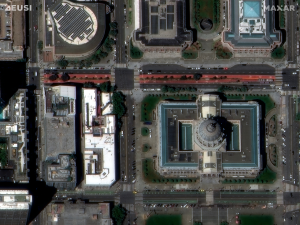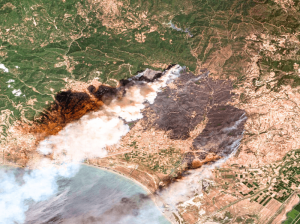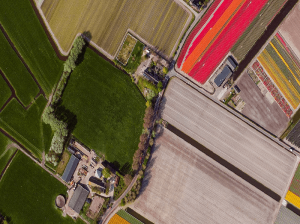Satellite Images Unveil Completed Chinese Military Fortresses in Spratly Islands
- Skye Boag, Marketing Manager at European Space Imaging
- 9 February, 2018
Recent satellite images supplied and analysed by European Space Imaging reveal the illegal construction of military bases in the contested Spratly Islands along the South China Sea are complete.
Images provided at 30cm resolution by DigitalGlobe satellite WorldView-3 refutes China’s promise to not militarise the artificial islands it has built in the South China Sea. Mischief Reef and Subi Reef are just some of the islands that show strong military construction.
From examining the satellite images of Mischief Reef we can identify a large deep-water port which also serves as a blue water naval base. There is a 2,700 meter runway on the Western quarter and since there are no passenger terminals or hotels visible, this airfield can only be described as a Joint Use naval airport, signifying its military connection.
Furthermore at the North-West quarter of the island, a combination deep-water port and blue-water naval base is clearly detectable. The quay is linear without warehousing however cargo is visible on the quay. Military barracks, communication antenna’s, underground POL storage tanks and control towers are all visible in the images collected.
SATELLITE IMAGES OF MISCHIEF REEF
“The overwhelming power of 30 cm resolution combined with the access and re-visit times over an Area of Interest (AOI) means change can be monitored safely from a distance. This is especially true in the case of the Spratly Islands, where the airspace around the islands is highly protected and airbreathing reconnaissance is difficult to get near/over the different AOIs. This makes the obtainable 30-cm high-resolution imagery and frequency to revisit so vital for world security” said Senior Advisor of Analytics, Randall Carlson of European Space Imaging.
Military bases require buildings for billeting and as a rule an athletic facility for the personnel. Across all the images supplied by European Space Imaging several buildings complete with basketball and tennis courts along with a full track and football fields can be seen. This can only mean that the Chinese military plan to populate these islands at some stage.
China boasts the largest military in the world with 2.2 million personnel and has one of the most technologically advanced air forces. Yesterday the Chinese air force made public for the first time a deployment of advanced fighter jets for a “joint combat patrol” over the South China Sea. With each of the satellite images supplied by European Space Imaging, aircraft hangars, airfield operations, refueling lorries and landing runways are clearly visible on the islands which leads to further speculation regarding the purpose of these islands and proposed combat patrol.
“The power of 30 cm resolution is undeniable for the defense and intelligence sector. In these images of the Spratly Islands we have been able to verify several identifying factors that could prove critical to a military operation without the risk of detection or on-ground personnel” said Managing Director Adrian Zevenbergen of European Space Imaging.
SATELLITE IMAGES OF SUBI REEF
Related Stories

Maxar Intelligence Releases First Images from WorldView Legion as EUSI Prepares Munich Ground Station for European Downlink
Satellite Imagery © 2024 Maxar Technologies Provided by European Space Imaging Munich, Germany – Maxar Intelligence released the first images collected by the highly anticipated

Satellite Imagery for Emergency Management
The use of satellite imagery for emergency response and management is invaluable. Both optical and SAR images help rescuers save lives when disasters happen, assist with damage assessments, and in many cases contribute to successfully preventing and predicting emergencies. Which events can be prevented? How exactly do first responders use satellite images? When are they better than other methods? We have summarised our 20+ years of experience in this article.

Satellite Imagery as a Valuable Tool for the New Common Agricultural Policy 2023–2027
On 1 January 2023, the new Common Agricultural Policy for years 2023–2027 entered into force. Hand in hand with the provided subsidies goes the necessity for monitoring and controls, which falls to the individual Member States. Therefore, an efficient, reliable, and cost-effective source of data is needed. Such source is Very High Resolution (VHR) satellite imagery. It allows you to conduct in-depth analysis of plant and soil conditions, map land use at wide scales with incredible detail and accuracy, and ensure that agricultural goals are being met.

MGP Pro: The Next Generation of SecureWatch for On-demand Access to VHR Imagery
MGP Pro provides unrivalled coverage, quality and flexibility. Its subscribers can access over 3 million square kilometers of daily image collections, plus more than 6 billion sq km of archived imagery at up to 30 cm resolution.





